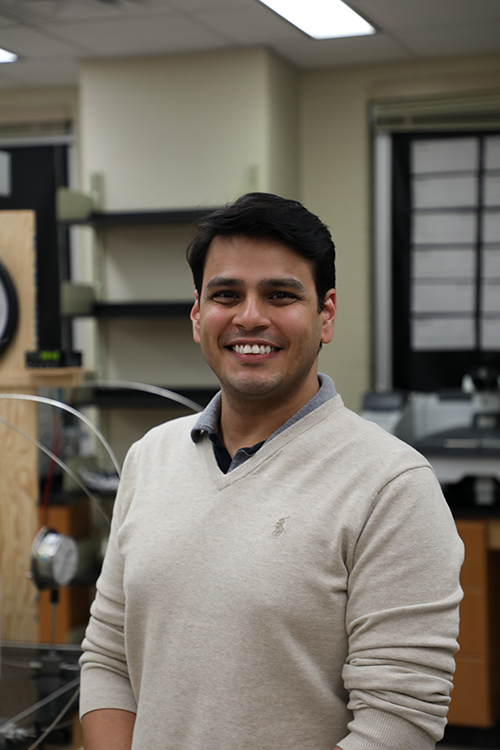
By Courtney Doucet | Reporter
Geology Ph.D. candidate, Roy Bassoo, had his article published in the Brazilian Journal of Geology. The research published in the journal focuses on gold formation in Bassoo’s birth country Guyana.
The journal is titled “The 9 Mile Deposit of the Barama-Mazaruni Greenstone Belt of the Guiana Shield: Geochemistry, Geochronology and Regional Significance” and is based on Bassoo’s master’s degree research on a gold deposit in Brazil. Though he completed his master’s in 2016, his research into the gold deposit was so extensive that he kept working on it until it was perfected for publishing in Dec. 2018.
“I was very excited. It was a long time coming,” Bassoo said.
Bassoo said he was born and raised in Guyana near the gold deposit he researched. The area where the gold deposit lies is a particularly difficult area to study due to the density of the jungle that surrounds it. There is a certain gold deposit in this region called the nine-mile area that he was particularly interested in.
“I wanted to understand how the gold formed or what’s controlling the formation of gold there,” Bassoo said. “Why that’s important is because it’s a remote area… it’s all jungle. So whenever you have a chance to examine rock there, you take the opportunity. This area, the Guiana Shield, is kind of a blank spot. So, any sort of data that’s coming out of here will add to the body of knowledge that already exists for this area,”
Bassoo collected gold samples from the deposit and studied them to determine when and why they were formed there.
“I was working for a gold exploration company. I’d wanted to do some research. While I was working with them, I started gathering data. Drill cores were used, and I decided to take measurements on those drills cores to kind of constrain how the gold got there, or where the gold is likely to be,” Bassoo said of his research methods in Guyana.
Bassoo found that the gold in the area was structurally controlled, meaning it was formed along fractures in a layer of the Earth.
“You have this intrusion, it’s called a granite intrusion, and it’s like a plug almost. It comes up to the surface and as it does so, it deforms the rock around it to create fractures. Along those fractures flowed hydrothermal fluids, really hot fluids, and the gold was dissolved in those really hot fluids. We’re not looking at the gold, but the controls that govern how it got there,” Bassoo said.
Since conducting research about gold, Bassoo has moved on to another element for his doctorate research. During his time here at Baylor, Bassoo has focused on how diamonds are formed in Guyana. He sees the research he did while pursuing his master’s degree as a stepping stone to his current research. He works closely with Dr. Kenneth Befus of geosciences while conducting his research.
“Roy is great. He is very enthusiastic. He also has a spark of charisma when he engages on just about any topic. That makes him very interesting to talk to,” Befus said.
Bassoo said he sees it as an honor to have contributed to the research of an area he grew up in. He is also a first-generation college student.
“I am the first person in my family to get a degree and to pursue a Ph.D. I’m very lucky, very fortunate to be at Baylor. I feel privileged to have contributed to this in a small way,” Bassoo said.





